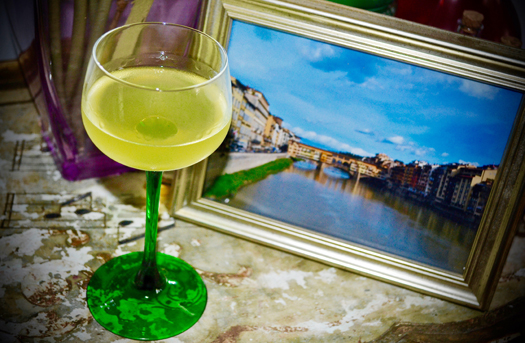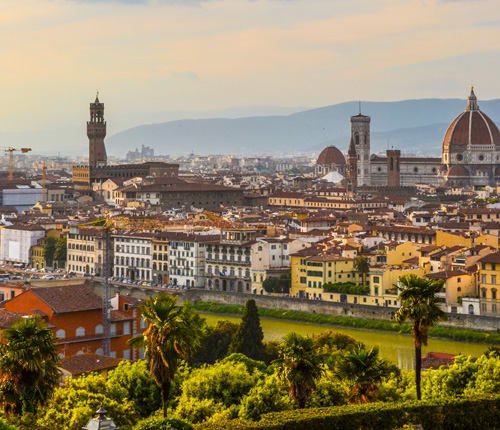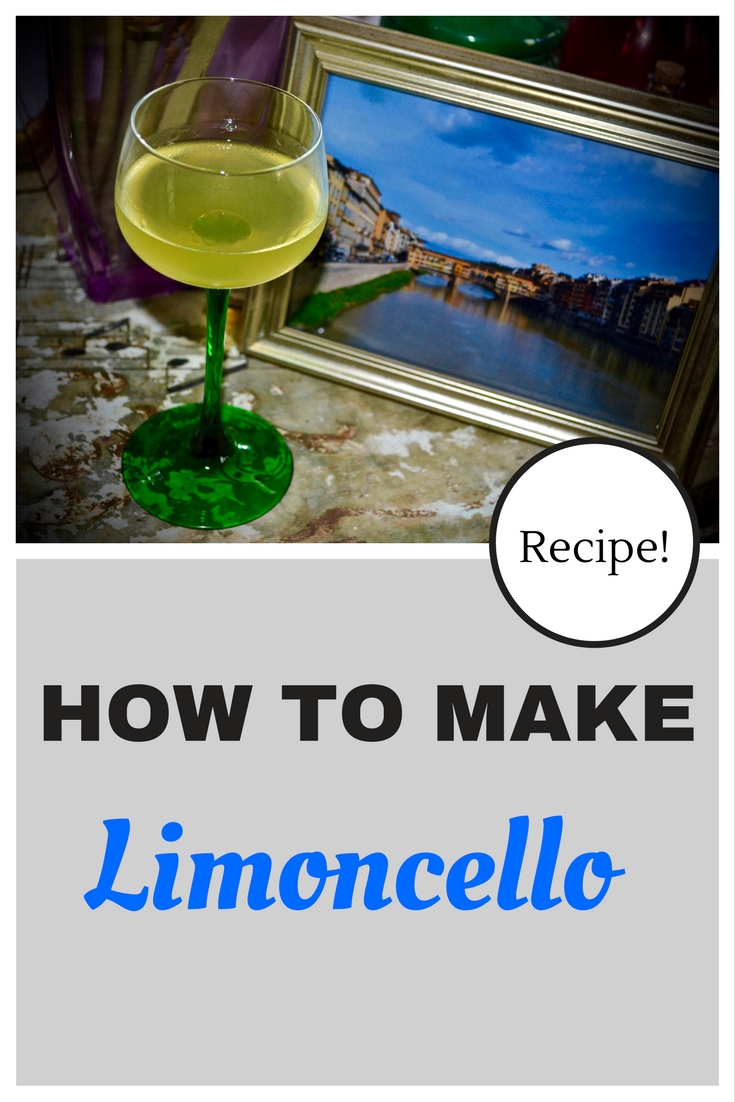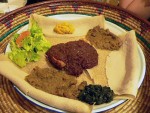An easy recipe for limoncello, your new favorite DIY tipple.

All photos courtesy of Stephanie Andrews
Limoncello: It’s a tummy tamer, an after-dinner delight. Italy’s liquid courage. Behold the power of lemons and their ability to quickly turn your evening into a whirling dervish if you aren’t careful. This isn’t something you knock back like a pint, lest you be knocked right on your butt.
When I touched down in Florence, after weeks of weary travel, I had no idea that this city and its love for this neon libation would leave such a lasting impact—and, fortunately, no headache. After every evening meal, once our plates had been whisked away, a small cocktail glass appeared in front of us as if by magic.
Despite its rather alarmingly bright color, limoncello—made of just lemons, alcohol, sugar, and water—boasts a profound sweetness that tastes like fresh, ice-cold sunshine. It reminds me of every vibrant blood-orange Florence sunset. It reminds me of warm breezes off the Arno river. Of the echoing crooning of a classical guitar in the Piazza della Signoria, and our favorite restaurant for people watching and architecture gawking. Limoncello soothed me when my tired, achy feet couldn’t carry me one more block.

Ahh, Florence
If you do a little research into the history of limoncello, you won’t be able to find much irrefutable information regarding its origin, except that it most likely came from the south of Italy. People in Sorrento, Capri, and along the Amalfi Coast have all lay claim to the concoction, but still no victor has been identified. Limoncello was said to be a friend to farmers and fishermen to fend off a cold. It’s also thought that monks concocted it to enjoy between daily prayers. I believe I enjoyed enough of it during my stay in Florence to fend off any cold or virus I could have caught while traveling.
Nowadays I enjoy homemade limoncello regardless of whether I feel the sniffles coming on. It’s the perfect complement to the end of an evening. Ring in your Friday with this glass of cheer, or wind down and sit on the porch and dream of Italy (it’s hard not to when you take your first few sips). Since I always store it in the freezer, it’s the perfect way to cool off after a warm summer day.
Since that fateful trip to Florence, I’ve made limoncello so many times that it’s often requested as a Christmas gift by family and friends. While there are many variations floating around on the internet, there’s one that’s always stood out. Sure, I don’t have easy access to Sorrento lemons, but I just use organic ones and it still tastes just as I remember. It doesn’t take much to make this potent digestif, other than some patience—but I think it’s well worth it in the end.
Here’s how to make your own limoncello.
Recipe adapted from discoveritalianfood.
Ingredients:
13 organic lemons
2 liters of Everclear (or any high-proof neutral grain spirit)
650 grams of white sugar
1 liter of filtered water
Method:
1. Make sure to wash the lemons well to remove any dirt or debris.
2. Using a vegetable peeler, carefully peel away the lemon skins in long strands. Try as much as possible to avoid cutting too deep, as you don’t want any of the white pith.
3. Pour the Everclear (or other neutral grain spirit) into a large mason jar. Once you’ve peeled the lemons, add the peels to the alcohol and cover the jar.
4. The hard part: Leave this mixture in a dark room (for example, a pantry) for about one month. Over the weeks, you’ll notice that the clear spirit begins to turn yellow.
5. At the one-month mark, make the simple syrup: Boil the white sugar and water together over medium heat until the sugar has completely dissolved and the mixture has thickened.
6. Once the simple syrup has fully cooled, add it to the alcohol.
7. Cover the mason jar again and let it sit in the dark for another 40 days.
8. Once 40 days have passed, use cheesecloth (or even a large coffee filter) to strain the liquid, capturing the lemon peels and any sugar residue.
9. Place the filtered limoncello into separate bottles or return it to the original jar and put in the freezer. When it’s fully chilled, it’s ready to be properly enjoyed. Salute!
About the author: Stephanie Andrews is a wanderer by nature, a budding travel photographer and an adventurous foodie. You can find out what delicious delicacies she's discovering by following her travel writings.











.jpg)

